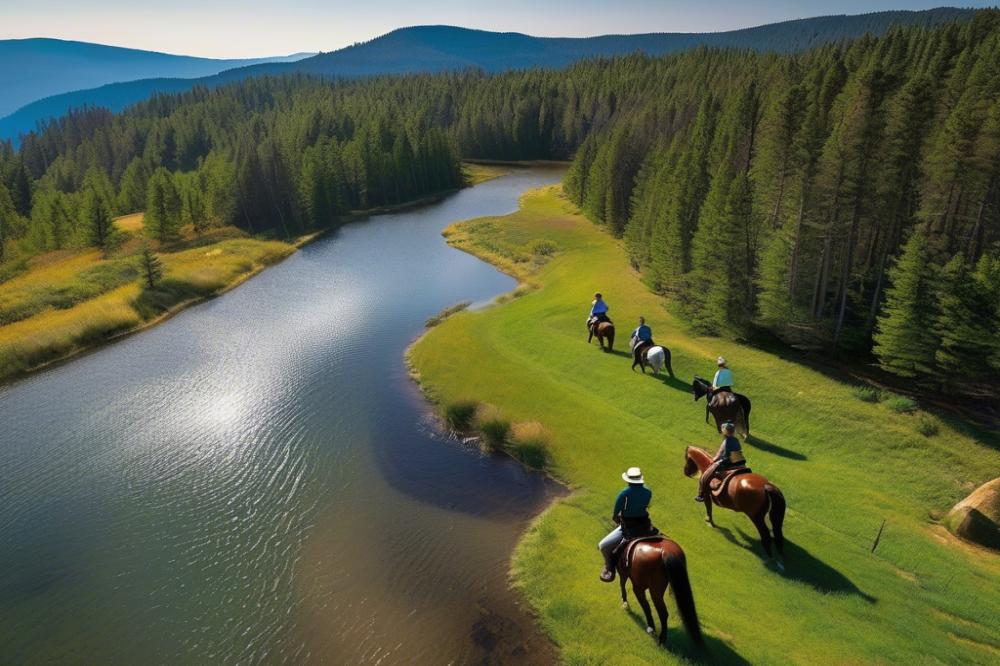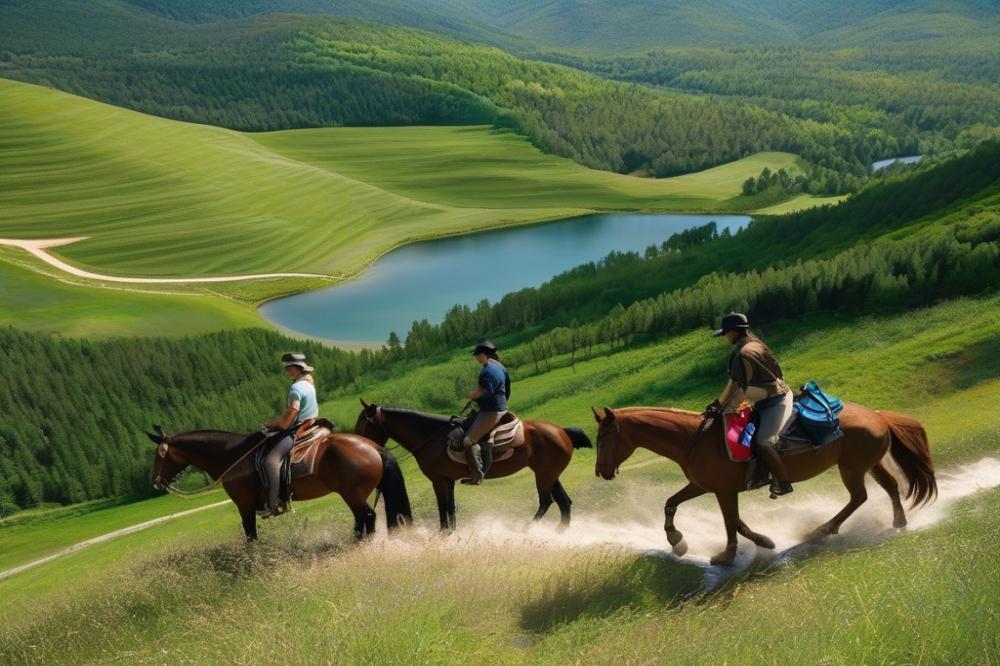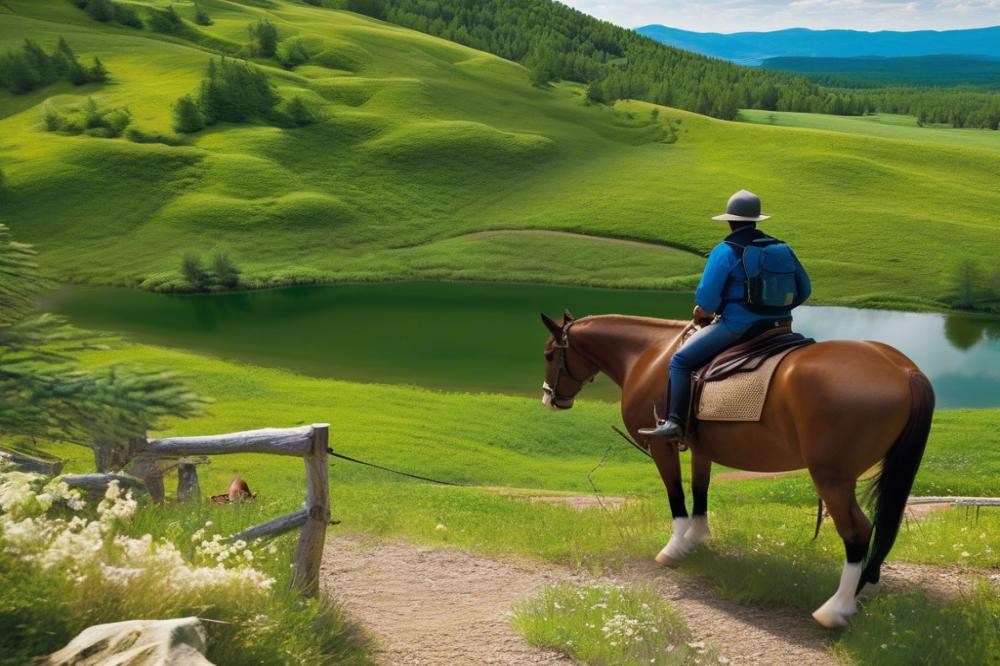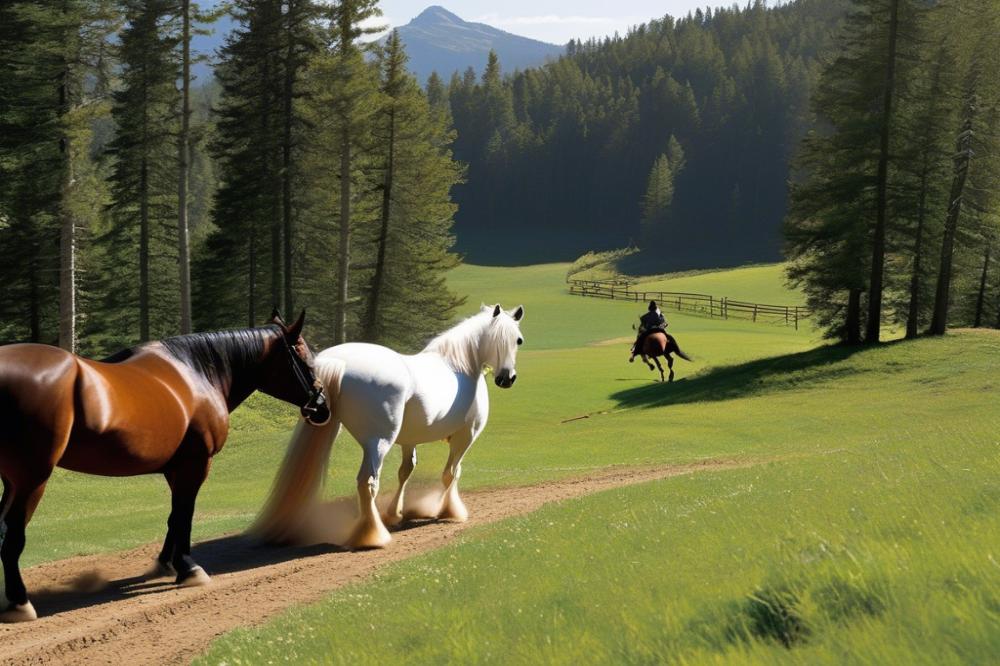Understanding draft crosses in Varied terrain
draft crosses are fascinating animals that blend the strength of draft breeds with the agility of lighter horses. It is vital for riders to grasp their distinct traits and abilities. These horses can excel in many equestrian activities, such as dressage, trail riding, or recreational jumps. Their unique build allows them to handle various challenges on the trail or in the arena.
Horseback riding is more than just a hobby for many. The bond between rider and horse creates an experience that transcends physical activity. Riders often find joy in honing their skills while exploring new terrains. Learning the right riding techniques can greatly enhance this connection. Whether navigating rocky paths or galloping through fields, proper methods can lead to successful, enjoyable rides.
Varied terrain plays a significant role in horseback riding. Each environment introduces new obstacles for both horse and rider. For example, a steep incline may demand different approaches compared to a flat landscape. Riders need to adapt to these changes, ensuring both their safety and that of their horse. A solid understanding of different surfaces—like mud, grass, or gravel—is crucial. Draft crosses, in particular, might require specific adaptations to handle rougher ground.
As riders immerse themselves in different terrains, they not only increase their skills but also enhance their appreciation for the sport. Understanding how to work with the strengths and weaknesses of a draft cross can make a significant difference. Riders who are familiar with various settings can optimize their experience, benefiting both themselves and their horses.
Understanding Draft Crosses

Draft crosses are horses that result from breeding a draft horse with a lighter breed. Often, these horses combine the size and strength of draft animals with the agility and speed of lighter breeds. Such combinations lead to unique characteristics that appeal to many riders.
When comparing draft crosses with pure draft horses, some key differences become clear. Pure drafts typically boast heavy builds and powerful muscles. In contrast, crosses tend to have a more balanced physique. They possess the ability to carry riders over various terrains while maintaining good endurance. Light breeds, meanwhile, are often quicker and more nimble. Nevertheless, these lighter horses may lack the strength needed for heavier work.
Riding draft crosses offers several advantages for equestrians. Their sturdy build makes them suitable for pulling and carrying loads. Versatility is another appealing trait. Riders can use them in recreational riding, trail riding, and even competitions. Many enjoy their calm demeanor, as they often exhibit a friendly and approachable nature. This temperament makes them ideal for novice riders or those seeking a reliable mount.
A notable aspect of these horses is their adaptability. They can handle various terrains, from rugged trails to smooth paths. Understanding how to ride a draft cross allows riders to fully appreciate their capabilities. Those who seek to enhance their riding experiences will find these horses to be a solid choice.
Preparing for Varied Terrain

Assessing the Terrain Types
Evaluating the different types of terrain is vital for a successful ride. Hills can present both challenges and excitement. Steep inclines require good control and confidence. Water crossings may vary in depth and flow, so be cautious. Traversing through forests adds another layer of complexity. Watch for obstacles such as downed trees or rocks. Open roads can have traffic, creating hazards that need attention.
Selecting Appropriate Riding Gear
Choosing the right riding gear can enhance the experience. A sturdy helmet is non-negotiable for safety. Comfortable riding boots will provide stability and protect your feet. Consider weather conditions when selecting apparel. Breathable fabrics can keep you cool in warm weather. Layering is helpful for cooler days. A well-fitting saddle is essential for the horse’s comfort.
Importance of Proper Saddling
Saddling correctly is crucial when riding large horses. A balanced saddle helps distribute weight evenly. Make sure the girth is adjusted properly to avoid slipping. Too loose can lead to discomfort, while a too-tight girth may cause pain. Check that the saddle pad is positioned correctly. It should not create pressure points. An ill-fitting saddle can result in performance issues.
Safety Checks Before Hitting the Trail
Conducting safety checks ensures a smooth ride. Inspect the horse’s hooves for stones or damage. Review the gear for wear and tear, looking for any frayed straps. Check the bit and bridle to confirm everything is secure. Having a first aid kit on hand is always wise. Before departing, plan the route ahead. Share your plans with someone who can help if needed.
riding techniques for Varied Terrain

Techniques for Riding on Hills and Slopes
Navigating hills and slopes requires careful balance and control. A rider should lean slightly forward when ascending to keep the horse’s weight evenly distributed. When descending, sit back and apply light pressure on the reins to maintain control. Looking ahead helps in anticipating changes in the slope. It is also important to be mindful of the horse’s footing. Horses can hesitate on steep areas. Encouraging your mount with a calm voice can make the ride smoother.
Navigating Through Water Crossings
Water crossings can be daunting for many horses. Before entering, take time to assess the situation. Ideally, approach calmly and confidently. Encourage your horse to take small strides. If the water appears deep or swift, dismount to assess the depth first. Use your body weight to help your horse maintain stability. Reassuring your horse with soft words can build trust during these moments.
Managing Rough and Uneven Ground
Riding on uneven terrain tests both rider and horse. Stay alert for sudden dips or rocks. Position your feet firmly in the stirrups for better stability. A slightly looser rein can help the horse navigate obstacles without feeling restricted. Shift your weight gently to keep balance. Avoid sudden movements that may startle your animal. If your horse stumbles, maintain composure and regain control quickly.
Equestrian Skills for Smooth and Controlled Movement
Control is essential for effective riding. Use clear, consistent cues for direction and speed. Squeeze gently with your legs for acceleration. Begin to slow by pulling back lightly on the reins. Practicing transitions between gaits helps improve your riding skills. Focus on maintaining a straight line when required. Use your legs to guide the horse, rather than relying solely on the reins. Remember, communication is key.
Training Methods for Draft Crosses
Groundwork is essential for any horse training program. Establishing a solid foundation in groundwork helps improve horse control. With groundwork, riders can teach cues for effective communication. Both horse and rider must work together for success. Building trust helps create a strong bond over time.
Effective communication is key in any relationship. It encourages understanding between horse and rider. Regular sessions focused on groundwork can help achieve this. The horse learns to respond to gentle cues. This forms a trusting partnership, vital for riding in varied situations.
Many exercises focus on improving balance and coordination. Simple tasks like lunging can enhance the horse’s ability to respond. Incorporating obstacles during these sessions challenges their agility. Balancing on different surfaces can also build strength. A confident horse is more capable when tackling new terrain.
Gradual exposure to different types of terrains is crucial. Start with familiar ground to build comfort. Slowly introduce varied surfaces like grass, gravel, and hills. Each new environment helps the horse adapt over time. This method promotes confidence and readiness for any ride.
Different exercises can be utilized to prepare for diverse landscapes. Incorporating poles on the ground helps with stepping and jumping. Riders can also practice tight turns, aiding in navigation of tricky routes. All these activities contribute to overall performance during rides. They create a well-rounded experience.
Equine Care in Different Terrains
Riding in varied terrains can be both exciting and challenging. Routine checks and care for your horse are essential, regardless of where you ride. This ensures your equine partner stays healthy and happy. Regular grooming helps to spot cuts and scrapes that might otherwise go unnoticed. Additionally, it allows for the inspection of general body condition.
Feeding and hydration adjustments become crucial when moving through different environments. High-energy terrains like hills may demand more food than flat areas. Draft horses might require more calories when working hard. Always carry enough water for both you and your horse on long rides. Hydration keeps muscles functioning at their best, especially in heat or during strenuous activity.
Maintaining shoeing and hoof health is vital for performances across various landscapes. Draft horses may need special shoes suited for rocky or uneven ground. Hoof care should be prioritized to prevent injuries. Regular trims will help keep hooves healthy and reduce the risk of lameness.
It’s equally important to recognize signs of fatigue and stress in your horse. Heavy breathing, reluctance to move, or an unusually low energy level are warning signals. Be observant. If any of these signs appear, it’s wise to take a break and assess their condition. Listening to your horse ensures both of you enjoy your ride safely.
Riding Tips for Success
Adapting your riding style is crucial when navigating varied terrain. Different environments require different techniques. For example, when climbing hills, lean slightly forward to help your horse balance. Conversely, when going downhill, shifts your weight back to prevent your horse from feeling overwhelmed. This balance can make a big difference.
Every horse has its own strengths and weaknesses. A draft cross may be excellent at pulling and carrying weight but might struggle on steep inclines or rough trails. Keep these factors in mind while riding. Understanding your horse’s limitations will help you make better decisions on the trail.
Building a strong connection between rider and horse is essential for success. Communication is key for effective riding. Use your body language, voice, and legs to guide your horse. A well-timed squeeze or a gentle nudge can signal your direction. Strive for teamwork, which enhances performance and creates a rewarding experience.
Participating in ongoing training and gaining more riding experience is essential. Each journey can teach you something new, no matter how small. Regular lessons with a skilled instructor can sharpen your skills and boost your confidence. Enjoy the process of learning, and don’t hesitate to set new goals along the way.
Final Thoughts on Riding Draft Crosses in Varied Terrain
Riding horses with draft lineage presents a rewarding experience for equestrians at every level. Their strength and endurance make them ideal companions for tackling different environments. Proper techniques contribute to both rider safety and horse comfort, highlighting the importance of understanding your mount’s unique capabilities.
Exploring varied terrain not only enhances riding skills but also builds a deeper bond between horse and rider. Different surfaces, hills, and obstacles provide opportunities for learning. Each ride can develop confidence and improve communication. Embracing challenges fosters a more dynamic partnership and enriches the riding journey.
Equine care must remain a priority as well. A healthy horse requires attention to nutrition, regular check-ups, and appropriate rest. Taking responsibility for their well-being is crucial for any rider. Good stewardship results in a happier, more willing partner on all outings.
As you plan your next ride, remember to appreciate the diversity that comes with varying landscapes. With patience and perseverance, you can grow as a rider and enjoy the company of your horse. Cherish the moments spent together and strive for continuous improvement.



